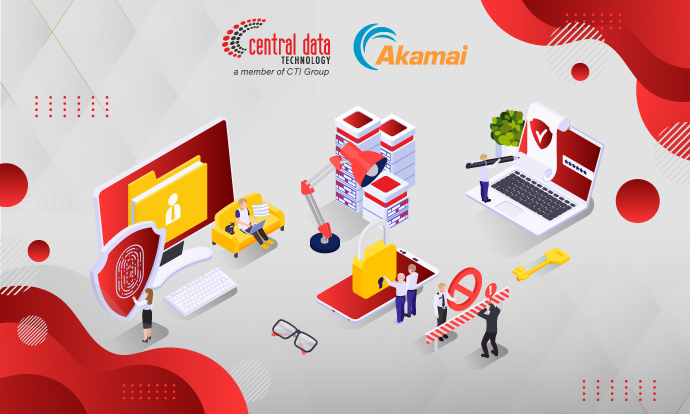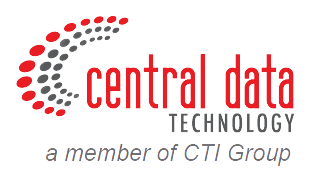
Ransomware protection is essential and cannot be disregarded due to its destructive and extensive effects. Initially, ransomware was less complex and probably easier to recognize. However, over time, hackers have created variations that are more complex and challenging to identify. They usually exploit unpatched software vulnerabilities or use phishing techniques to gain access to victims’ systems.
In certain cases, ransomware has spread swiftly through instances like WannaCry and NotPetya, infecting thousands of systems worldwide in a short period. The effects of ransomware can include the loss of priceless data, disruptions to businesses, financial losses, and even threats to human life when targeting vital infrastructure such as hospitals.
These incidents highlight the importance of understanding ransomware and implementing necessary security measures to protect your business from such attacks.
What is Ransomware?

An example of malware that holds a victim’s data or computer system hostage is ransomware. Derived from the term ‘ransom,’ ransomware is defined as malicious software that encrypts data or blocks access to the victim’s system. It then demands a ransom, usually in the form of virtual currency like Bitcoin, from the victim to decrypt the data or unlock the victim’s system.
Typically, ransomware enters the victim’s system through methods such as phishing emails, exploiting software vulnerabilities, or visiting risky websites. Once inside the victim’s computer, the ransomware initiates the encryption of data, making it inaccessible without the decryption key, which is held only by the perpetrators.
Subsequently, victims receive a ransom note containing instructions on how to pay the ransom and obtain a decryption key to recover their data. However, paying the ransom can present a moral dilemma for victims due to the lack of assurance that the perpetrator will indeed return the data even after the ransom is paid.
Ransomware has evolved into a significant threat affecting individuals, companies, and institutions worldwide. Those who deploy ransomware often aim to profit financially by capitalizing on the fear and lack of awareness of their victims. Consequently, maintaining robust cybersecurity measures and taking preventive actions—such as regularly backing up data and refraining from opening files or links from unfamiliar sources—is of utmost importance.
4 Ransomware’s Effect on Business
The effects of a ransomware attack on a business can be harmful in many ways, including monetarily, company’s reputation, data leaking. Here are some consequences of the ransomware attack on your company.
1. Restricted Business Activities
May affect the company’s network or information system, delaying business operations. Customers might not be able to use your website or application, and staff members might not be able to access important data required for their jobs. As a result, businesses might experience significant losses and their operations are affected.
2. Negative Impact on Business Reputation
Ransomware attacks can also harm a company’s reputation. Customers become aware of the weak security system, making them skeptical about the business’s reliability. This loss of trust can lead customers to lose interest in engaging with these companies.
3. Potential Data Breach
Hackers often threaten to leak or delete data if the ransom isn’t paid. This threat can be highly damaging. If sensitive company data is exposed, the company’s reputation takes a hit, and customers might avoid doing business with them.
4. Financial Losses
Ransomware attacks have the potential to cause extremely huge financial losses, which could threaten business continuity. For instance, the National Cyber and Crypto Agency (BSSN) said that 22 percent of private organizations had experienced ransomware attacks, and that potential losses from ransomware in Indonesia could reach trillions of rupiah.
4 Steps of Ransomware Protection

Preventing ransomware attacks is better than dealing with them when they happen. There are four steps you can use as ransomware protection
1. Use a Reliable Cyber Defense System
Verify that the cybersecurity system you’re using is reputable and current. This includes implementing firewalls, antivirus and other security software that can help identify and stop threats before they harm your system.
2. Network and software security
Always use the most recent versions of your operating system, software, and apps. Update network security configurations frequently to find and fix any potential vulnerabilities.
3. Increasing employee understanding of cyber security
It is crucial to provide employees with education and training on proper cybersecurity procedures. Teach them not to click suspicious links or open unknown emails.
4. Separate computers are used as IIS web servers
Using vulnerabilities in the IIS Web Server is one of the ways the ransomware virus spreads. It is critical to keep the IIS Web host apart from any servers or devices that contain sensitive data. You can stop the ransomware virus from infecting every area of your computer in this manner.
Consider Akamai’s Guardicore Segmentation solution if you need effective ransomware protection. Using micro segmentation technology, this solution can efficiently help segregate PCs used as IIS Web Servers, decreasing the risk for assaults in complicated situations. This will protect you from advanced ransomware assaults.
Guardicore Segmentation, Akamai’s Ransomware Protection Solution
Today’s technology is becoming increasingly complex. While this complexity offers benefits to businesses and internet users, it also leads to the sophistication of ransomware attacks. To combat these challenges, Akamai has introduced Guardicore Segmentation. This solution utilizes micro-segmentation technology to effectively thwart ransomware threats and other attacks by reducing the attack surface in intricate environments.
Additionally, Akamai provides device protection that was historically hard to ensure, along with the necessary visibility and analysis tools to counter formidable threats. Akamai Guardicore Segmentation enhances security for IoT and OT devices that are ubiquitously connected, assisting businesses in mitigating potential attacks and online vulnerabilities.
One of Guardicore Segmentation’s notable features is its continuous device detection, which automatically identifies newly connected network devices and facilitates onboarding procedures for specified devices.
By integrating Guardicore Segmentation, you can streamline the security of data and corporate networks. This empowers you to more effectively mitigate online risks, including ransomware, which stands as one of the most prevalent threats today.
Also Read: Must Know, Here Are 10 Ways to Overcome Ransomwar
Get Akamai Guardicore Segmentation Solutions from CDT
Central Data Technology (CDT) offers the Akamai Guardicore Segmentation solution to protect difficult-to-secure devices while also providing the visibility and intelligence required to prevent ransomware threats.
Akamai, as a CDT principal, will assist you throughout the implementation process, from consultation to deployment to after-sales support, avoiding trial and error. Contact us by clicking the following link for more information.
Author: Wilsa Azmalia Putri
Content Writer of CTI Group

